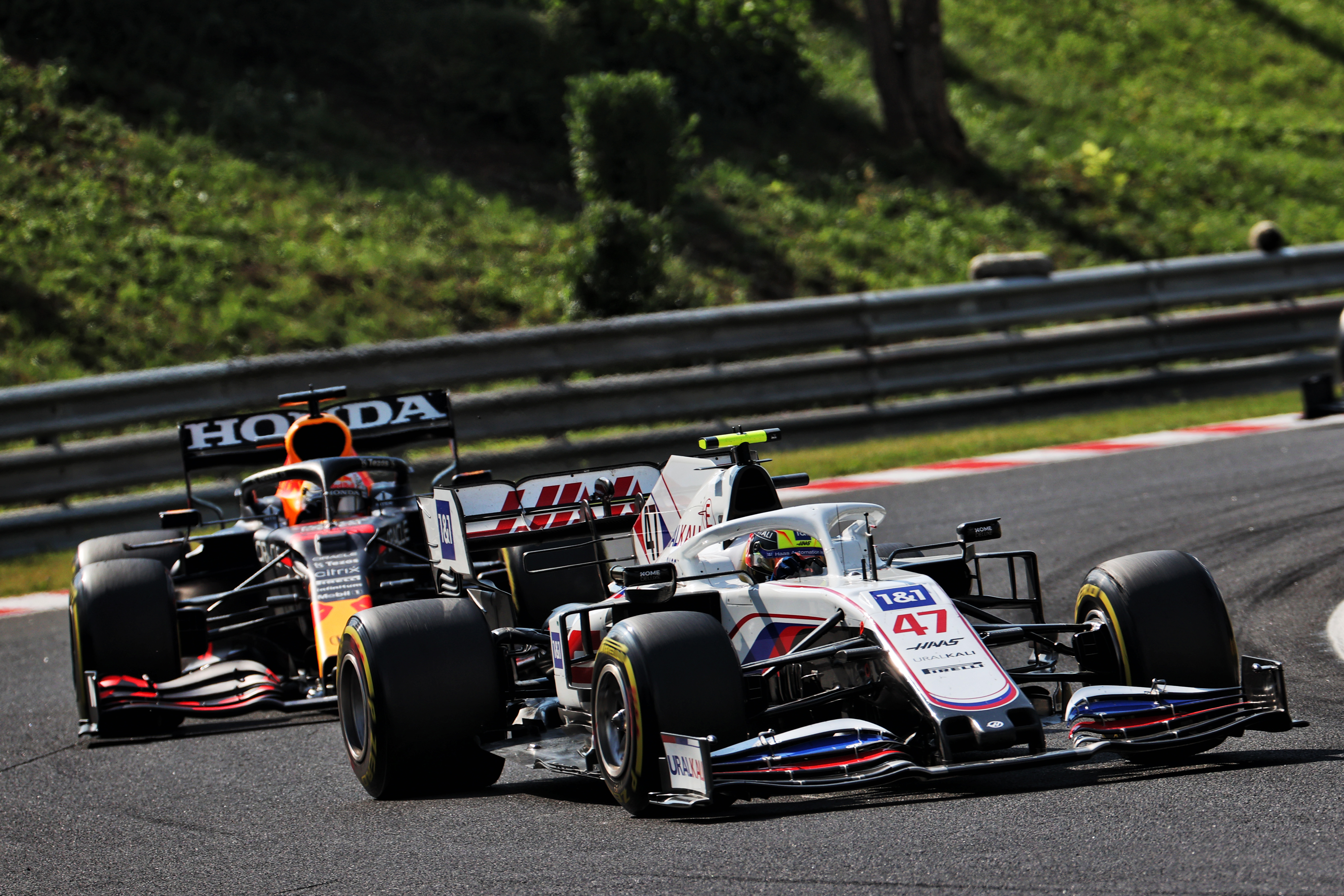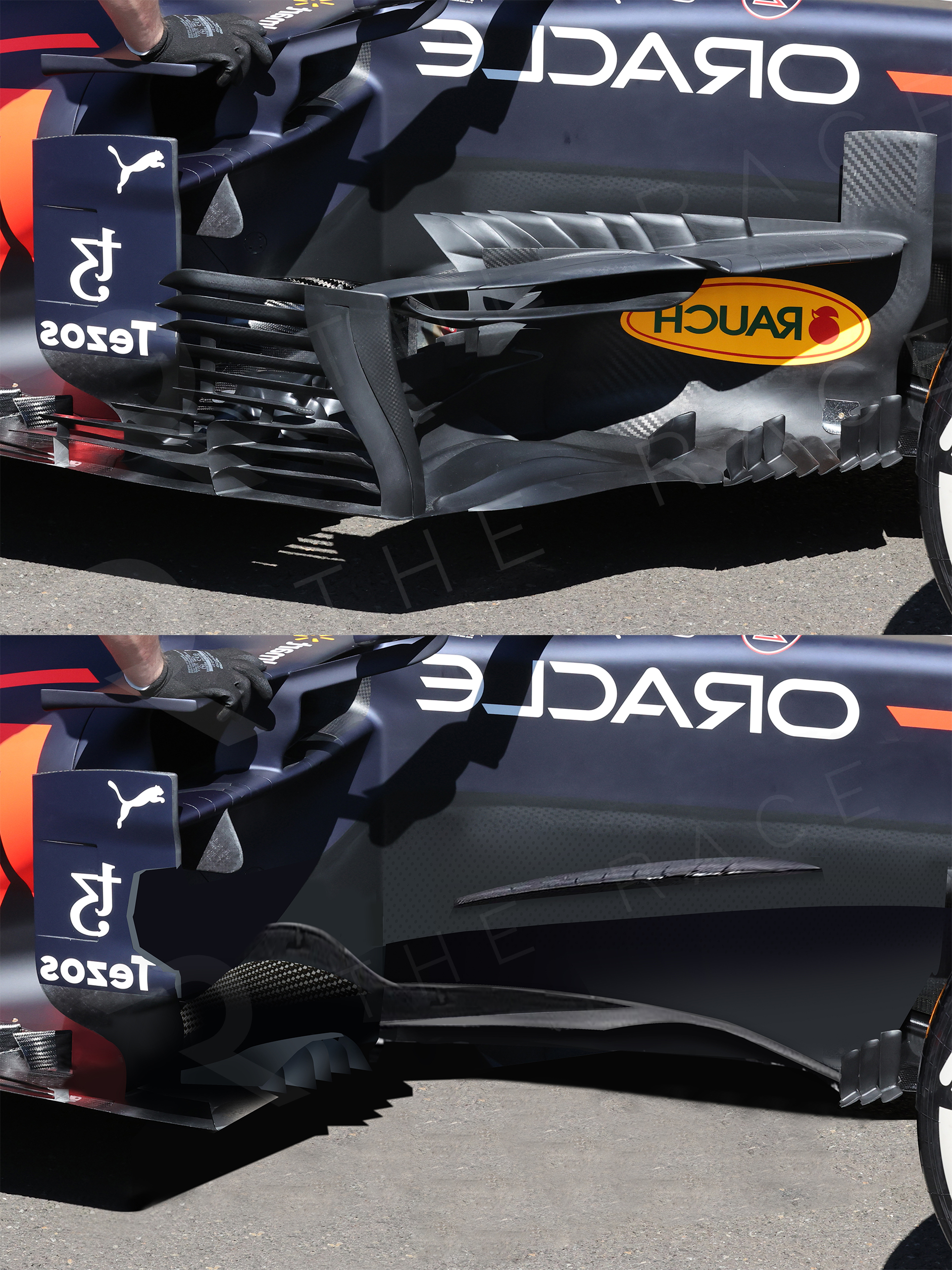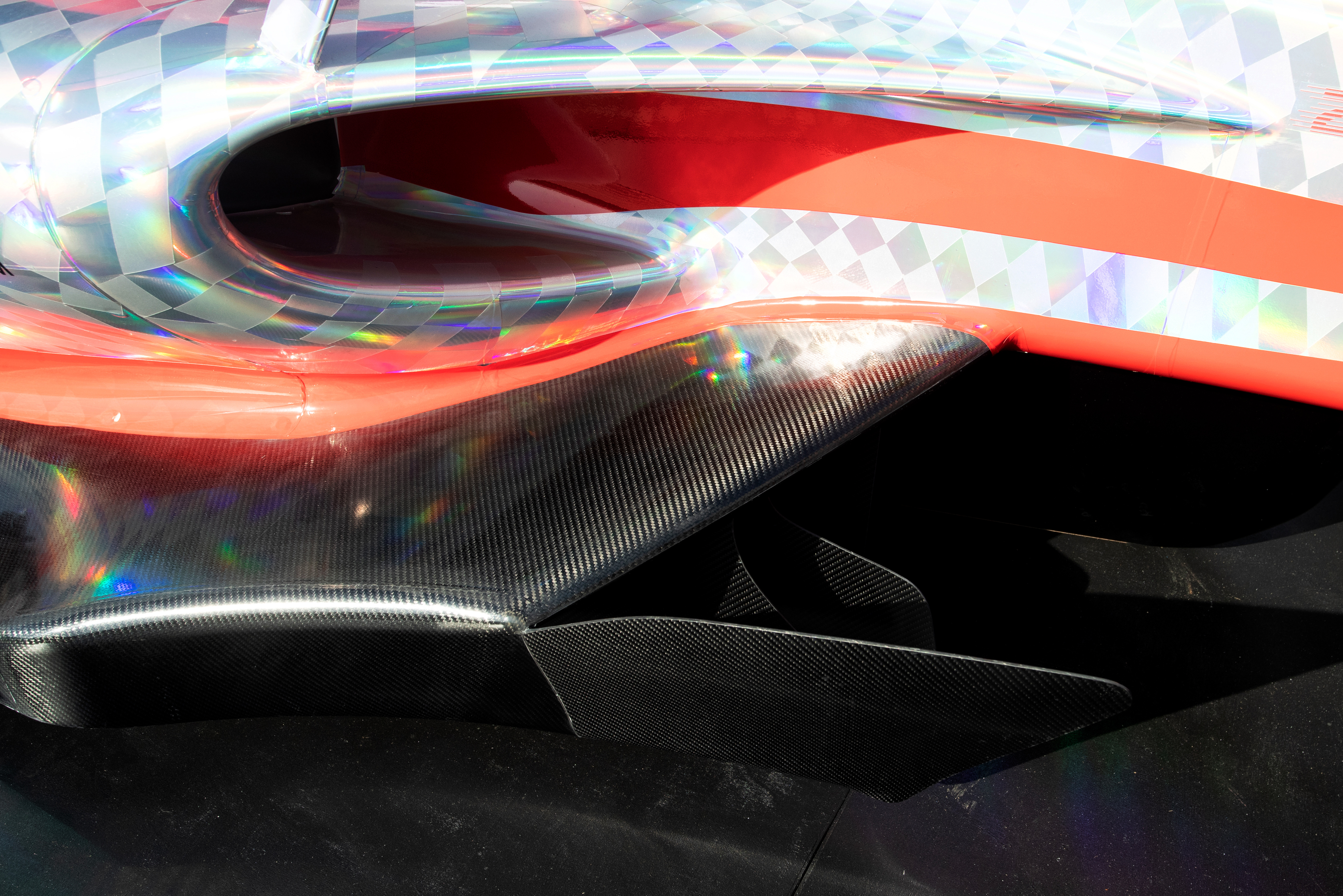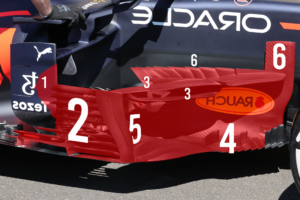Up Next

Formula 1 bargeboards are so complicated that it’s impossible to describe in detail what they do given every one of the components that makes up the wider package in that area has a subtle effect.
But Max Verstappen’s damage in the Hungarian Grand Prix, with the majority of the right-side bargeboard package missing after Lando Norris hit the side of his Red Bull at the start, gives us the chance to understand the effect.
The bargeboards themselves aren’t about generating downforce in their own right. Instead, they are about pulling airflow out from underneath the front of the car, which improves the performance of the front wing and conditions the airflow to maximise the downforce produced by the underfloor and diffuser.

When you remove as much of the bargeboard package as Verstappen suffered, the airflow is still being delivered to the right areas but it has lost the velocity that the bargeboard induces on that airflow. Putting it simply, it’s just moving slower and in a much less refined form.
Red Bull team principal Christian Horner’s claim that Verstappen had less downforce than a Haas is perhaps an exaggeration given he was able to pass and pull away from Mick Schumacher, but it will certainly have cost downforce and ruined the balance.
That is why Verstappen was complaining about oversteer and understeer. It will also have overheated and accelerated the degradation of the tyres.
Looking at what was missing from Verstappen’s bargeboards, on top of the effect of the piece of floor that was also missing, it’s clear this will have had a big impact on the airflow.
It’s always difficult to make exact comparisons of pace in terms of the way the race panned out, but Lewis Hamilton, who was four tenths of a second faster than Verstappen in qualifying, and Verstappen both set their fastest laps after making their final changes to medium Pirellis.
Verstappen’s best time was 1m20.945s on lap 43 and Hamilton’s was 1m18.715s on lap 49, so that’s 2.230s Verstappen was slower than Hamilton, albeit having set his time six laps earlier. We can round that six laps up to 7kg of fuel, so let’s say around the Hungaroring that adds up to two-tenths of a second making that difference 2.0s.
If their relative race pace was similar to their qualifying pace even with all of that damage, Verstappen was only about 1.6s slower than Hamilton.
Again, rounding up some numbers, 1% more usable downforce is roughly one tenth of a second, so that means Verstappen was short of around 16% of downforce. That’s a huge amount when you are used to driving a car with that extra grip and the tendency is to drive into the corners just that little bit too fast, so because of the lack of grip you get into an understeer-oversteer situation.
When I say usable downforce, what I mean is an increase in downforce right through the ride height range, which is with you at all corner speeds and not just peaky downforce that comes and goes and spooks the driver.
If we take those numbers and double them we get 32% (to account for the bargeboard on either side of the car), which is probably in the ballpark of what the Red Bull bargeboards are worth. As a comparison, it would be similar to running Monza downforce around Silverstone. Let’s see then who could take Copse flat.

If we take Schumacher’s fastest race lap of 1m22.717s, that’s four seconds slower than Hamilton – or using the above numbers 40% less grip. So that’s still a lot less grip than Verstappen was having to battle with.
Suffering the damage on only one side of the car will again exaggerate the problem. All of Verstappen’s damage was right-hand side, so I would expect the car to have less grip in right hand corners than it had in left hand corners.
That’s a massive difference, however the underfloor low pressure will distribute itself across the floor surface, so it will be the front wing that will generate most of the problems as if you could you would want to add downforce to the inside of the car.

With the car missing the right-hand bargeboard, going around a right-hand corner it will basically roll more because the right side of the car will be lighter. This will allow more airflow to leak under the sides of the floor, again reducing the overall downforce. But going around left-handers, it will be a bit more normal.
That Verstappen could still lap competitively enough to finish in the points tells you everything you need to know about the absurd money being spent on these tiny details in Formula 1. If the bargeboard area had been made a simple exclusion zone for 2022, it would have saved the teams millions of whatever currency you want to calculate it in.

Next year is all different. The bargeboard area is dramatically simplified, which is good news both as teams won’t have to spend millions making endless tiny changes in this area and because of this, it should play a part in making cars less sensitive to turbulence.
Well, that’s the hope. The jury is still out on this.





